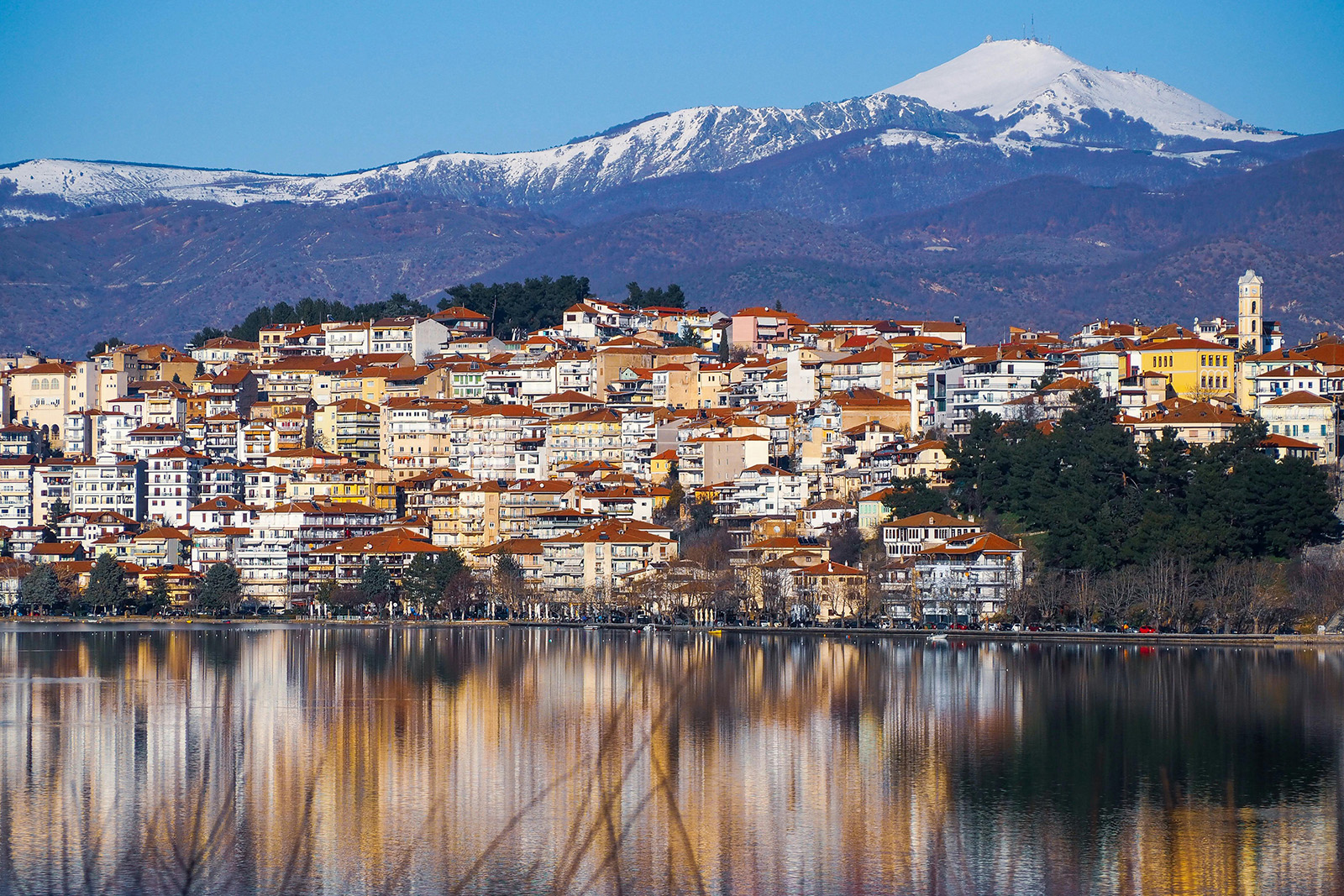
Northern Greece has its fair share of less well-known places to visit. The lakeside city of Kastoria near the Albanian border is one such place. Visiting Kastoria won't be on every traveller's Greece itinerary, but those who stop by are in for a treat. When planning my trip through Northern Greece, I was searching for places to go between Thessaloniki and Corfu. Kastoria, with its unusual layout on a peninsula with a lake around it, caught my eye. While I'm glad I travelled to Kastoria, I don't think I made the most of my visit. Here's what I wish I'd known before going.

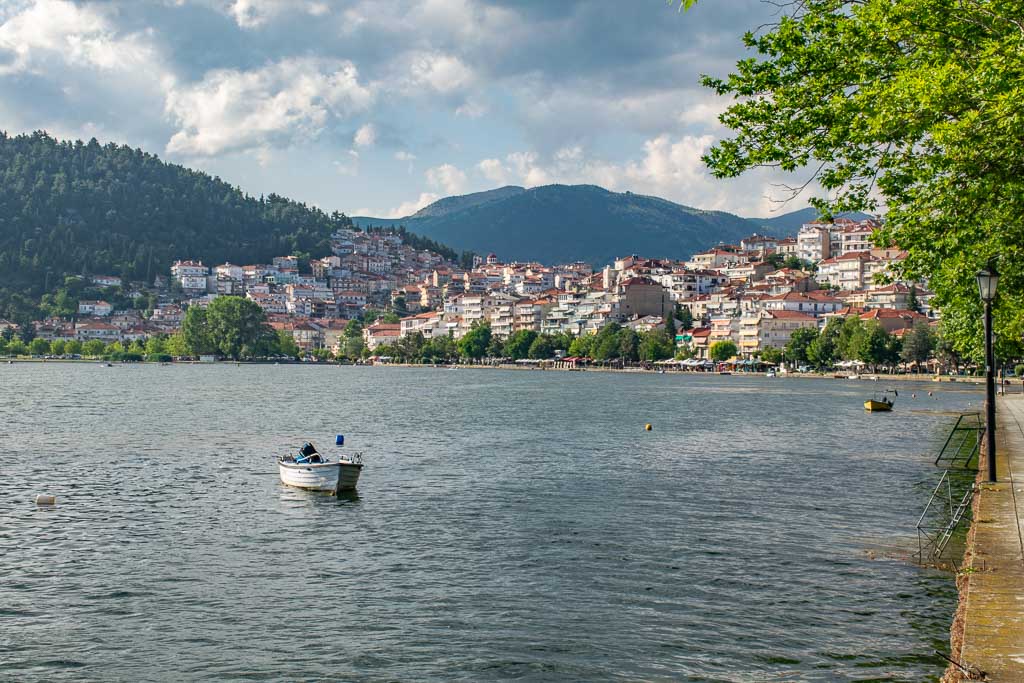
Kastoria is located in Western Macedonia, the region in northwestern Greece by the Albanian border. It's not a large city, but it is the largest urban centre in this part of the country.
What first interested me about Kastoria was its location. The city covers the narrow bridge of a peninsula that sticks out into Lake Orestiada. This means the city's buildings are mostly squeezed one on top of the other and lake scenery is never far away.
Part of why Kastoria is worth visiting is what it reminds me of. Walking along its lakeshore reminded me (a little) of the lake districts of Switzerland, Austria and Italy around the Alps. Quiet lake, nearby mountains, slow pace of life – the elements are all there, just with Greek flavour.
A fact about Kastoria I only learned while there is that fur trading has long been a primary industry of the city. You see fur shops far too often to be a coincidence. Mink fur is the local specialty, with minks found in the surrounding lake.


The location of Kastoria puts it out of the way for most tourist routes through Greece. Chances are, you're either going from one coast to the other on the mainland, heading to Albania, or visiting northern attractions such as Mount Olympos and Vikos Gorge.
Driving with a rental car is the simplest and most flexible way to get to Kastoria. Parking may be a challenge depending on where you stay, but I'm sure your accommodation will help with that.
Thessaloniki is the easiest starting point if you're using public transport. Take the bus to get from Thessaloniki to Kastoria, with several departures scheduled throughout the day. It's much harder to get from somewhere like Ioannina by bus, but not impossible (depending on the day). Other bus routes can be found at KTEL Kastoria.
Buses coming into Kastoria stop at Parko Olimpiakis Flogas, with a small office over the road to organize your onward journey.

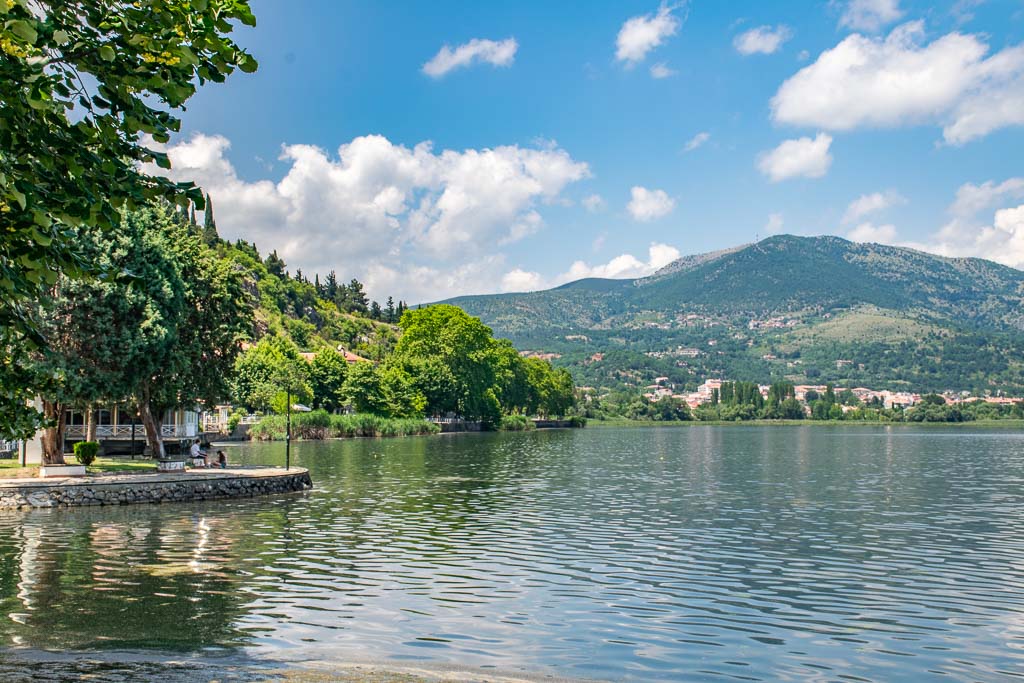
Visiting Greece in the summer is never quiet. And yet, I saw very few tourists in Kastoria while I was there. The city only got busy when there was a rowing meet and a car show the day I left. Even still, that only affected a small part of the city.
My theory for why it was so quiet is that Kastoria simply isn't a summer destination. In a place like Greece, it's not an obvious choice. Maybe, people visit Kastoria in the other seasons. Judging by photos online, autumn is the best time to visit Kastoria for the foliage all along the waterfront.


When you're visiting Kastoria, expect to spend much of your time focused on the city's historical centre. This is the hilly area that sits on the peninsula, while the more modern parts of Kastoria are on the lakeshore to the west.
The two main areas visitors need to know when visiting Kastoria are Apozari and Doltcho. Apozari is the neighbourhood on the northeast side and Doltcho roughly covers the southeast side. Both have attractions to see and old-fashioned character, but I'd say Doltcho is better preserved (see the above photo).
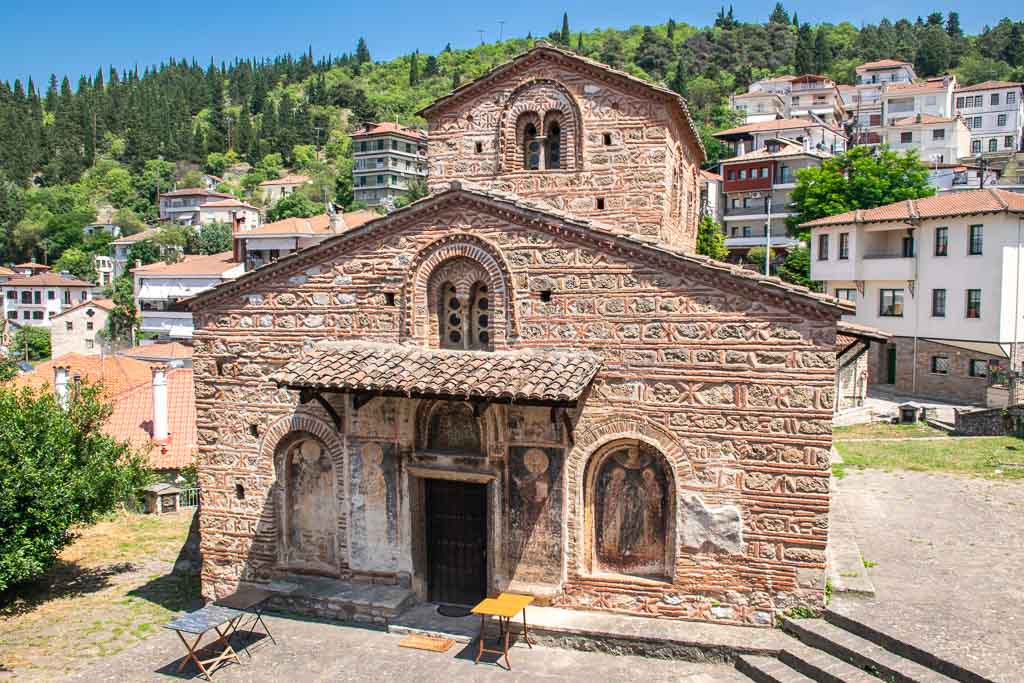
Not that Apozari isn't worth exploring. The neighbourhood is one of the better places for Ottoman architecture in Greece, although local descriptions would say the buildings have designs common to Macedonia and Epirus.
The most common attractions in Kastoria are old mansions and churches. Many of the churches were built in the last few centuries, but a rare few like the Holy Church of the Holy Unmercenaries date back to medieval Byzantium.
One unique Kastoria attraction though is the ruined Madrassa. As one of the few remaining Ottoman landmarks in the city, I hope it's one day opened to the public.

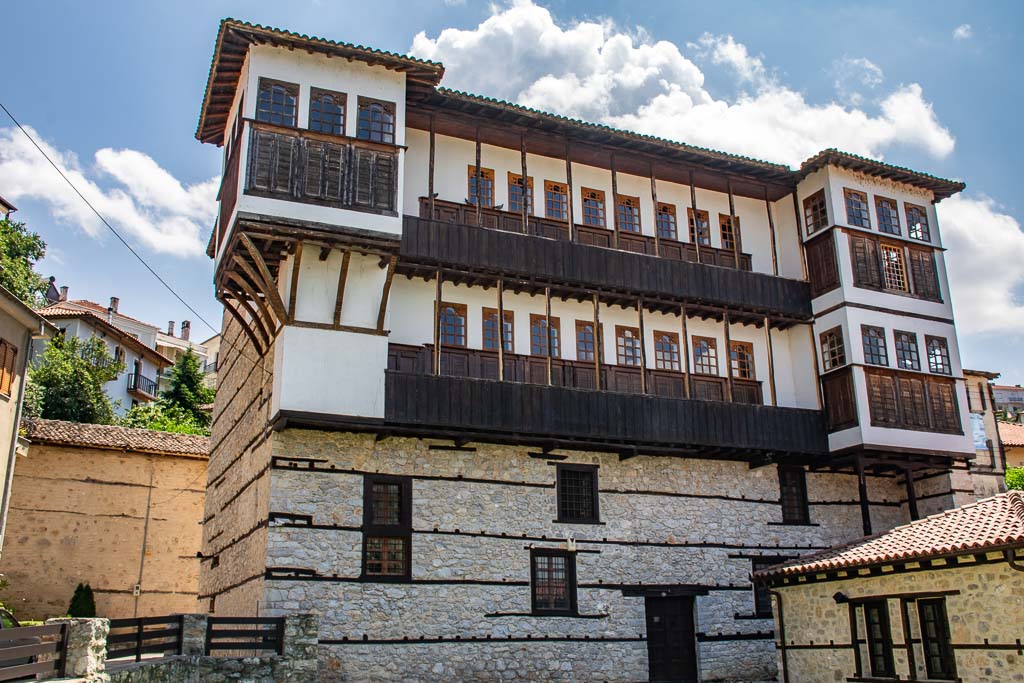
So, what are the main things to do in Kastoria?
Well besides walking around the city's pretty waterfronts and wandering its Old Town, there are museums where you can learn more about Kastoria.
This was my biggest missed opportunity when visiting Kastoria. My timing was completely off, from reaching the museums too late in the day and then trying again to go when they were closed.
Several old mansions around Kastoria now serve as museums. Tsiatsiapa Mansion is probably the most popular, where you can explore the inside of this large 18th-century building. Across in Doltcho, the Folklore Museum of Kastoria has taken residence in another preserved mansion.
The Byzantine Museum of Kastoria stands out as it's located in a modern facility up on the hill. Again, I was met with a closed gate when I tried to go. The museum acts as a primer for the "open-air museums" of Apozari and Doltcho.

As someone who loves Greek food, I pay extra attention to where to eat when travelling in Greece. During the daytime, I tried several of the local bakeries (such as Iris Bakery) in the modern part of Kastoria and was pleased with the sandwiches, baked goods and snacks I found.
My one main food recommendation though is Boroino on the north shore. They serve typical Greek food and it's nice if you sit out by the waterfront, although inside looked nice too.

Let me say this now – Kastoria is a destination with endless viewpoints. It seems like every step you take along its waterfront, a new view pops up. The city's unusual layout on the lake is what first drew me to visit and that same layout makes Kastoria a photogenic place to explore.
Both the historical centre's south and north coasts offer nice views of Kastoria. But I think the best view of the city is from the park along the shore west of the city. Simply follow the waterfront south and you'll reach a water fountain and a small gazebo. Walking around to that point, and maybe even farther, is worth it for the view, in my opinion.
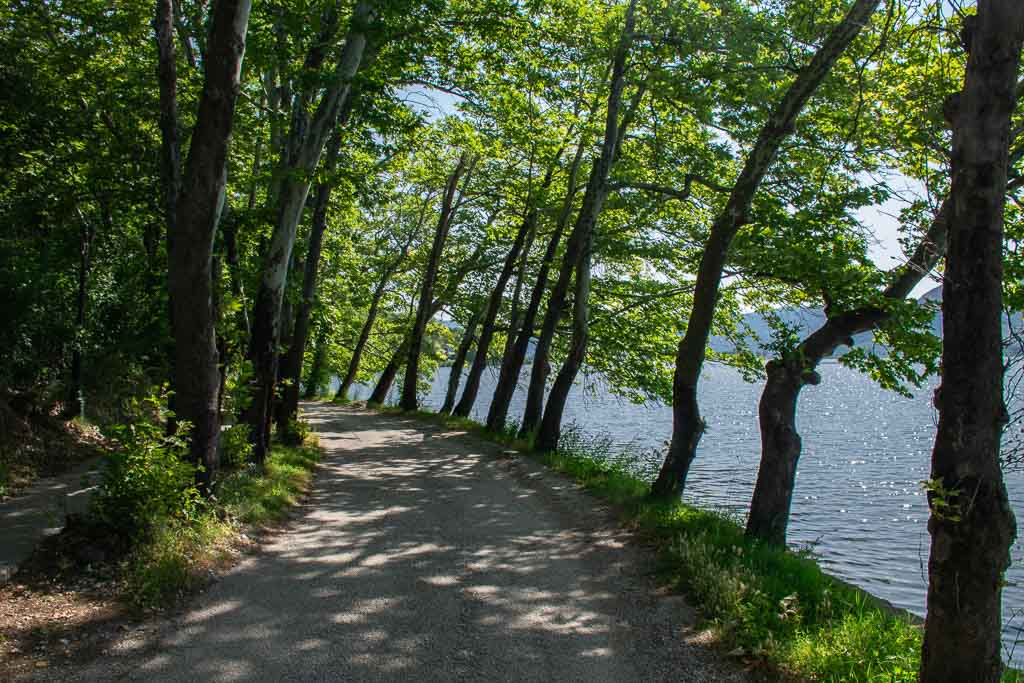
The main benefit of spending two days in Kastoria was having the time to explore. After walking around the central parts of the city's waterfront, I couldn't resist the temptation to walk the whole way around the peninsula.
Look at a map of Kastoria and you'll notice that the city stops partway into the peninsula. From there, it's mostly wild. A road follows the shore of the peninsula and another runs up to the hilltop church at the peninsula's centre. Beyond that, it's mostly just nature.
Walking around the peninsula is flat and requires around 90 minutes to 2 hours depending on how much you stop. Along the peninsula loop, there are two main attractions: the Dragon's Cave and the Monastery of Panagia Mavriotissa.
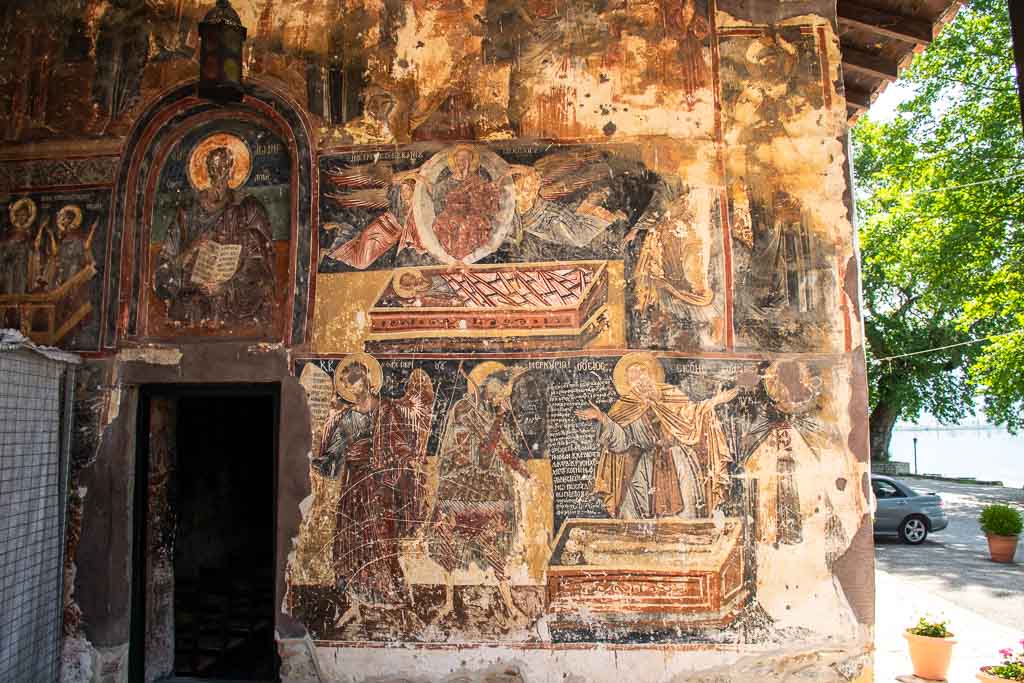
The Dragon's Cave is supposably quite impressive with its rock formations. Me and my claustrophobia weren't feeling it, so I just kept going. Instead, I stopped at the Monastery of Panagia Mavriotissa with its detailed 13th-century frescos inside and out. Once you've taken a look around the monastery, the local cafe and its outdoor terrace are great for a nice pitstop.